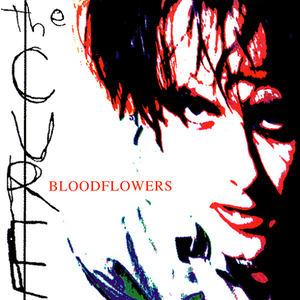Published on Mar 20, 2000
For some reason, the Cure have never gotten the critical
recognition that they deserve as one of the most unique bands of
the rock era. No one has ever really matched either the signature
dark, brooding, layered sound of their most meandering album
tracks, or the peppy sound of some of their “hits.”
Maybe it’s because they occasionally overdo it. Maybe it’s the
makeup. But love them or hate them, there’s no denying that the
Cure have always been an entity like no other. When they were
churning out new albums every year, their approach was somewhat
ahead of their time, but oddly enough, in the ’90s, the decade that
should have finally embraced them wholeheartedly, they have been
very spotty in terms of new material.
Bloodflowers may end up being their last album, but that
would be too bad if it were, for it’s the most cohesive Cure disc
since 1989’s
Disintegration, their previous cusp-of-a-new-decade release.
The two are actually being compared in nearly every piece written
about the new album, and it’s not surprising, since they both take
the Cure’s unique approach to album-writing.
Upon first listen, the melodies don’t really stand out, and many
of the songs sound the same. But after several listens, not only do
the subtle differences between individual tracks get more
pronounced, but the fact that many of them do have striking
similarities gets less and less annoying. The reason is that on
both
Bloodflowers and
Disintegration, the Cure set out to write a full length
album, as if it were an hour long musical piece, one that evolves
slowly and methodically, through lots of turns, but nevertheless as
an album rather than a collection of 10 random songs. It’s what
they do best, and after the aptly-titled
Wild Mood Swings, it’s great to see it again.
But this isn’t
Disintegration Part 2: Electric Boogaloo. The Cure actually
do something they’ve never really done before on this album – they
let acoustic guitars shine through, and it’s absolutely
breathtaking. “Out Of This World” has the typical dense
whisper-to-a-flourish build up of any Cure album-opener, but when
the axe makes its first appearance, it sounds like they’ve been
listening to Ani DiFranco. “Where The Birds Always Sing,” the
closest thing there is to “upbeat” on the disc, lets some
well-placed piano trills and folkish ninth chords sneak in among
the synth strings and wailing electric guitar – oh, and the words
are good too, it’s sort of a Cure self-criticsm; “The world is
neither fair nor unfair… you always want so much more than
this.”
Even on the tracks where they’re 100% plugged, they’ve never
sounded this organic. Maybe it’s because they’re making a little
more sense – “There Is No If…” is about yet another
relationship in jeopardy, but it’s a lot easier to tell exactly how
it’s in jeopardy. The vaguely electronic “The Loudest Sound”
follows it as sort of a companion piece; a relationship (perhaps
the same one) even further in jeopardy, but has a sense of
complacency to the previous piece’s struggle. The more acoustic
“The Last Day Of Summer” is the kind of poem Morrissey would kill
to write – “It used to be so easy, I never even tried… but
the last day of summer never felt so cold.”
As for the musical passages leading into the
mostly-over-6-minute tracks, they’re still well in excess of a
minute, but contain significantly less repetition than in the past.
“Watching Me Fall” is over 11 minutes long, but due to some of the
wildest and most adventurous meandering guitar soloing ever to
grace a compact disc, it hardly seems like it.
Not that repetition is necessarily bad – they did it beautifully
on
Disintegration, in fact – but it’s good to hear the Cure
trying some different tricks.
Bloodflowers is the Cure in complete sentences. Much of the
magical innocence has been lost, but the Cure are still as
thoughtful, and darker than ever. Many of today’s younger bands who
draw their inspiration from the Cure’s gothic past would benefit
from hearing what Robert Smith and company can still do in the
present.
